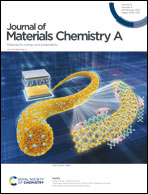Inductive effect as a universal concept to design efficient catalysts for CO2 electrochemical reduction: electronegativity difference makes a difference
Abstract
CO2 electrochemical reduction (CO2ER) into valuable chemical feedstocks holds great promise for energy supply and environmental remediation but remains a challenge due to the lack of high-performance electrocatalysts. The inductive effect, originating from the electronegativity difference, plays critical roles in modulating the electronic structure of electrocatalysts, which would provide unexpected physicochemical properties to boost the electrocatalytic performance. However, although the inductive effect has been proposed to rationalize the altered catalytic performance of catalysts for various catalytic applications, no systematic review has yet been reported in terms of the fundamental role and construction method of the inductive effect. This review for the first time discussed and summarized the definition, classification, characterization, and construction method of the inductive effect. Special attention is given to the construction method of the inductive effect and its fundamental roles in tailoring the catalytic performance of CO2ER electrocatalysts. Furthermore, we proposed promising strategies, discussed the challenges, and highlighted the future outlook of this universal and promising concept. It is hoped that this review could provide more profound guidance for the rational design of next-generation highly efficient catalysts in energy and environment related fields.



 Please wait while we load your content...
Please wait while we load your content...